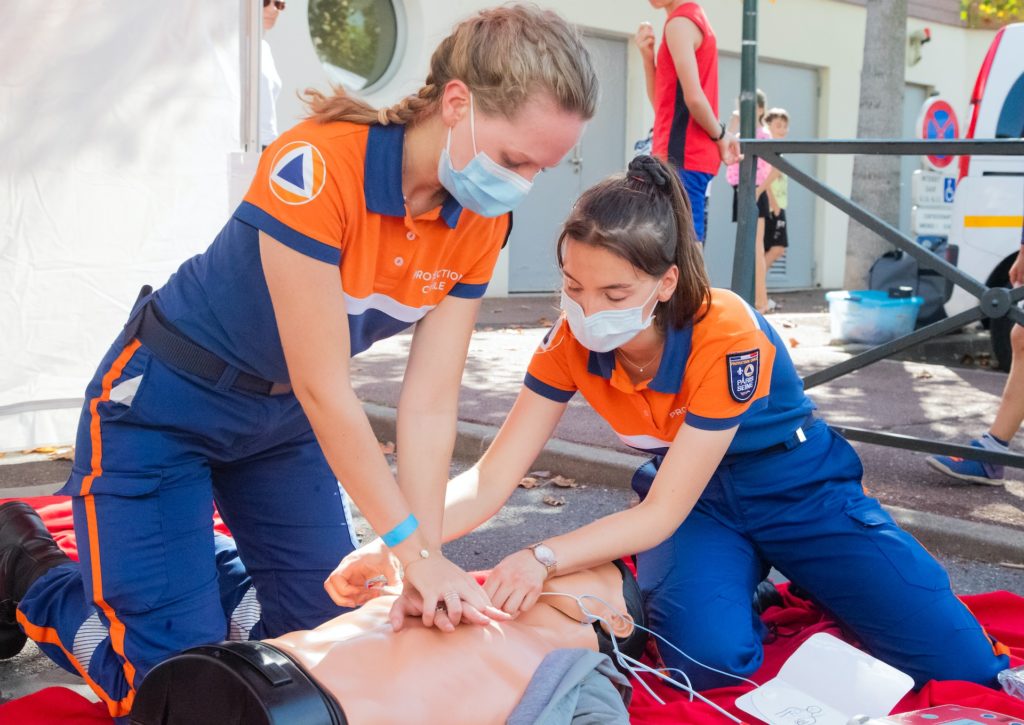Cardiopulmonary Resuscitation (CPR) is a vital life-saving skill that can make the difference between life and death in emergencies. In this comprehensive guide, we will delve into the significance of CPR, the shift to online CPR certification, and the purpose of this guide.
Understanding CPR
Cardiopulmonary Resuscitation (CPR) is a crucial technique used to maintain blood circulation and oxygen supply to vital organs when someone experiences cardiac arrest or stops breathing. It involves chest compressions and rescue breaths, helping to restore the heart’s electrical activity and restart normal breathing. The importance of CPR cannot be overstated, as it can prevent brain damage and increase the likelihood of survival.
The statistics are compelling. According to the American Heart Association, about 350,000 out-of-hospital cardiac arrests occur annually in the United States, and nearly 90% of them result in death. However, immediate CPR, when performed correctly, can double or even triple a person’s chances of survival.
Traditional vs. Online CPR Certification
In-person CPR classes have traditionally been the go-to method for learning CPR. They provide hands-on training, immediate feedback from instructors, and the opportunity to practice on manikins. These classes are valuable, especially for those who prefer face-to-face learning and need physical practice.
On the other hand, online CPR certification courses have gained popularity due to their accessibility and flexibility. They allow you to learn at your own pace and convenience, making them ideal for individuals with busy schedules or those who prefer self-directed learning. However, it’s essential to weigh the advantages and disadvantages of both options before making a choice.
Online CPR Certification: How It Works
Accredited online CPR courses are designed to be comprehensive and user-friendly. They typically offer a combination of video modules, interactive simulations, quizzes, and reading materials. These courses cover essential CPR techniques, such as chest compressions and rescue breaths, and often include instruction on how to use automated external defibrillators (AEDs).
Online CPR certification courses also come in different formats, catering to various learning preferences. You can choose a self-paced course, where you progress through the material at your own speed, or opt for an instructor-led option, which may include live virtual classes and personalized guidance.
The certification process typically involves passing an online exam and demonstrating your CPR skills through video submission. This allows you to receive feedback and ensure you can perform CPR correctly.
The Importance of Accreditation
Accreditation is a crucial factor when choosing an online CPR certification provider. It ensures that the certification you receive is recognized and trusted by employers, healthcare institutions, and other organizations that may require CPR certification. Recognized organizations such as the American Heart Association, American Red Cross, and the National CPR Foundation offer accredited courses that meet industry standards.
When you hold an accredited online CPR certification, you can be confident that your training aligns with the latest guidelines and best practices in CPR. This recognition can be instrumental in securing employment or volunteering opportunities where CPR certification is a prerequisite.
Flexibility and Convenience
Online CPR certification offers unparalleled flexibility. Whether you’re a busy professional, a parent, or a student, you can access the course material whenever and wherever it suits you. This flexibility is particularly valuable for those with unpredictable schedules or those living in remote areas without easy access to in-person training centers.
Additionally, online courses allow you to tailor your learning experience to your needs. You can revisit specific modules, practice CPR skills repeatedly, and take as much time as necessary to grasp the concepts. This personalized approach ensures that you gain confidence and competence in CPR.
Cost-Effectiveness
Cost considerations are often a significant factor when choosing a CPR certification option. Online CPR courses tend to be more cost-effective than traditional in-person classes. This cost savings come from the elimination of expenses related to travel, printed materials, and facility rentals. Additionally, online courses often offer a range of affordable pricing options, making CPR certification accessible to a broader audience.
However, it’s essential to be aware of potential hidden costs. Some online CPR certification providers may charge additional fees for certification cards, skills verification, or access to study materials. Before enrolling in a course, thoroughly review the pricing structure to ensure transparency and affordability.
Staying Updated with CPR Guidelines
CPR guidelines are continually evolving to incorporate the latest scientific research and best practices. Staying current with these guidelines is essential to providing effective CPR. Online CPR certification courses are designed to keep you up-to-date with the latest changes, ensuring that your skills align with the most current standards.
These courses often include modules or sections dedicated to the latest guidelines, providing you with insights into changes in compression depth, rate, and other critical aspects of CPR. Additionally, they may offer resources for recertification and renewal, helping you maintain your skills over time.
Overcoming Common Concerns
Many individuals have reservations about online CPR certification, primarily due to concerns about hands-on practice and skill development. However, reputable online courses address these concerns by incorporating hands-on simulations and skill verification components.
Hands-on simulations often use interactive manikins or virtual reality technology, allowing you to practice chest compressions and rescue breaths with real-time feedback. In some cases, you may need to submit videos demonstrating your CPR skills to ensure proficiency. These elements ensure that you gain practical experience and are well-prepared to perform CPR when needed.
Success stories and testimonials from individuals who have completed online CPR certification can also provide reassurance. Hearing about the positive experiences and real-life situations where CPR knowledge made a difference can boost confidence in the effectiveness of online training.
Choosing the Right Online CPR Certification Provider
Selecting the right online CPR certification provider is a critical step in your journey to becoming certified. To make an informed choice, consider the following factors:
- Accreditation: Ensure that the provider is accredited by a recognized organization.
- Course Content: Review the course content to ensure it covers the necessary CPR skills and guidelines.
- Instructor Qualifications: If you opt for an instructor-led course, verify the qualifications and experience of the instructors.
- Pricing: Compare pricing options, including any additional fees for certification cards or materials.
- Reviews and Testimonials: Read reviews and testimonials from previous learners to gauge the quality of the course and the provider’s reputation.
Taking the time to research and select a reputable online CPR certification provider is essential for gaining the knowledge and skills you need to respond effectively in emergencies.
Real-World Application
Online CPR certification has a tangible impact on individuals and communities. It empowers individuals to respond confidently in emergencies, potentially saving lives in various settings. Let’s explore some real-world examples and case studies highlighting these benefits:
- Workplace Safety: Many workplaces require employees to be CPR-certified to ensure the safety of employees and visitors. Online certification allows employees to fulfill this requirement conveniently, enhancing workplace safety.
- Community Resilience: CPR-certified individuals in the community can be the first line of defense in emergencies, such as at public events, sports games, or in the home. Their ability to perform CPR can significantly increase the chances of survival for those in need.
- Educational Settings: Teachers, coaches, and school staff benefit from CPR certification to respond to emergencies involving students. Online certification provides an accessible avenue for educators to acquire this crucial skill.
- Healthcare Professionals: Healthcare workers often need frequent CPR recertification. Online courses provide a flexible option for busy professionals to meet these requirements while staying updated with the latest guidelines.
- Family Preparedness: Parents and caregivers can take



